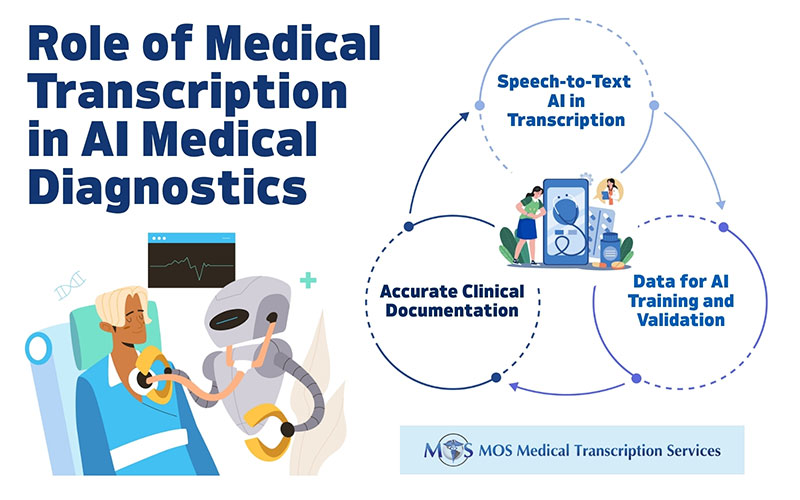
Electronic health records (EHRs) improve care quality and coordination, promote accurate diagnoses, and save time and money. HIPAA compliant medical transcription companies securely integrate with EHRs to help physicians manage their electronic documentation tasks. Digital records ease communication with patients and allow physicians to share data with other providers and track continuing care. One of the most significant benefits of EHRs is that they provide physicians and patients with shared access to health information and foster patient participation in their care. However, it is found that misconceptions about HIPAA often restrict patient access to their own medical records. The American Medical Association (AMA) has now come out with a playbook to address this problem.
Patients have the right to access their own medical information. Per HIPAA, patients can make a request to view and obtain a copy of their health records, get copies of their records in paper or electronic format, and have records sent to another entity for treatment, billing, or operations purposes. HIPAA allows patients access only to health data that is included in a “designated record set,” defined as: “medical records; billing and payment records; insurance information; clinical laboratory test results (including genomic information generated by a clinical laboratory); wellness and disease management program files; and clinical case notes”.
HIPAA mandates that hospitals, medical clinics, physician practices, pharmacies and health insurers have meet patient record requests within 30 days (a one-time 30-day extension may be granted).
However studies have revealed that there are several barriers that prevent patients from getting their medical records, according to a 2018 Kaiser Health News report. A study by researchers at Yale University covering 83 leading hospitals found that only 53 percent of hospitals’ forms indicated patients could get their complete records. Likewise, GetMyHealthData campaign to extend access to digital health information found that the problems with note sharing could be more widespread in practices, with consumers reporting poorly informed or unhelpful staff, high fees, long waits and frustrating bureaucratic processes, among other barriers.
The U.S. Department of Health and Human Services (HHS) explains that providing patients easy access to their health information empowers them to be more in control of decisions regarding their health and well-being. When patients can access their own health record, they can:
- better monitor chronic conditions
- make more informed decisions about their health
- adhere to treatment plans
- find and fix errors in their health records
- track progress in wellness or disease management programs
- directly contribute their information to research
However, myths around HIPAA Right of Access have prevented some providers from sharing health information with patients who request it. There are misconceptions about complex legal requirements surrounding patient electronic access to medical information. These myths cause a lot of confusion among patients, third parties, and medical practices focused on delivering good patient care.
The AMA’s online Patient Records Electronic Access Playbook seeks to dispel these myths. The Playbook educates physicians about:
- the need to provide patients with access to their medical records
- the legal requirements related to medical record access and the sharing of records with patients
The AMA’s new resource on patient access to electronic records provides reliable information on a several topics such as:
- Amounts and types of information
- Forms and formats for sharing records
- Patient requests and Involvement of third parties
- Timing for record request fulfillment
- Denial of record request access
- Permissible charges
- Confidentiality of substance use disorder records
The playbook also provides guidance to help medical practices understand EHR capabilities and meet patient record requests efficiently while complying with federal and state laws. It recommends that healthcare providers learn how patient records can be shared with other healthcare providers, how to enter data into patient portals, and how to send patient records to USB drives or CDs. Physicians should also encourage patients to take an active interest in their healthcare, get a copy of their health records, and check these for errors.
“As technology plays an increasingly important role in collecting and exchanging health data, the AMA believes that providing patients with improved information access and better information privacy are not mutually exclusive goals,” said AMA Board Chair Jesse Ehrenfeld, MD, MPH in a press release announcing the release of the playbook. “The new playbook is an important example of the AMA’s commitment to ensuring patients can easily access their personal health information that has been entrusted to physicians.”
EHR-integrated HIPAA compliant medical transcription services can help physicians ensure secure, up to date and accurate clinical notes. In fact, outsourcing medical transcription to a reliable service provider is the first step in efficient patient note sharing.


